The precision and quality of your instruments are paramount for any oral procedure. Having the essential instruments of oral surgery ensures efficient, accurate outcomes in every procedure.
A study published in the Journal of Oral and Maxillofacial Surgery found that using quality surgical instruments significantly reduces the incidence of postoperative complications. The research further highlighted that clinics that used advanced surgical tools reported a 30% decrease in complications, such as infections and prolonged recovery times.
Here, we will highlight 10 essential dental surgical instruments that every clinic should have, from dental anglevators to hemostats.
This article provides details on their uses, types, key features, and best practices to help you make the right investment in quality oral surgical instruments.
Quick Overview of Essential Instruments of Oral Surgery
|
Instrument |
Description |
Purpose/Use |
Key Features |
|
Dental Elevators |
Separates teeth from sockets |
Simplifies tooth extraction |
Varying designs, Strong grip, Reduces trauma |
|
Bone Rongeurs |
Bone trimming and contouring |
Bone reshaping after tooth removal |
Durable build, Multiple angles, Efficient cutting |
|
Hemostats |
Clamps blood vessels |
Reduces bleeding |
Secure hold, Serrated tips, Easy to clean |
|
Needle Holders |
Holds needles for suturing |
Accurate, stable suturing |
Secure locking, Ergonomic, Anti-slip surface |
|
Dental Forceps |
Grabs and removes teeth |
Essential for extractions |
Strong grip, Varied designs, Precision tips |
|
Surgical Suction Tips |
Keeps surgical field clear |
Removes fluids and debris |
High suction, Easy sterilization, Durable |
|
Retractors |
Holds soft tissue away |
Improves access and visibility |
Multiple sizes, Smooth edges, Lightweight |
|
Bone Files |
Smoothens bone edges |
Prevents tissue damage post-surgery |
Precise finishing, Different textures, Ergonomic |
|
Dental Anglevator |
Angled tool for extractions |
Efficient and less traumatic extractions |
Angled blade, Multipurpose, Strong structure |
|
Surgical Scalpels |
Sharp blades for incisions |
Accurate tissue cutting |
Precision cuts, Ergonomic handles, Durable materials |
10 Key Instruments of Oral Surgery
Below is the list of instruments used in oral surgery to successfully solve oral problems. These instruments must be part of any oral clinic that wants to ensure win-win strategies.
1. Dental Elevators
They are the essential instruments of oral surgery, designed to loosen teeth from their sockets, simplifying the extraction process by creating separation between the tooth and periodontal ligament.
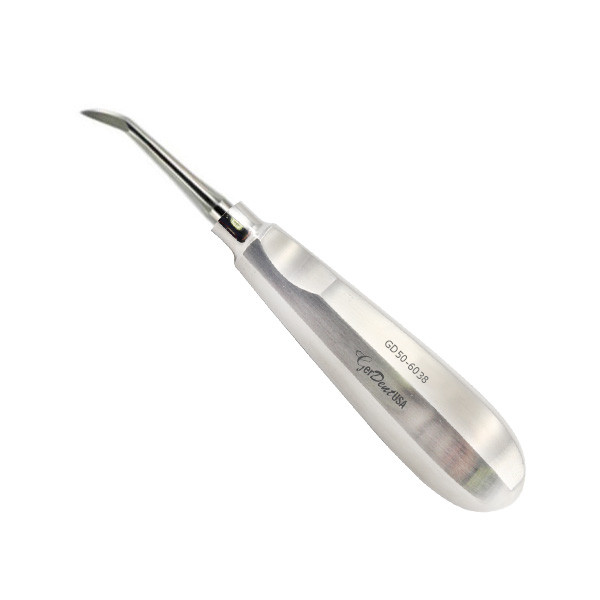
Types:
- Straight Elevators: Ideal for general extractions; provides a straight, stable grip.
- Cryers (East/West Elevators): Shaped for difficult molar extractions, especially when access is limited.
- Luxating Elevators: Thin, sharp blades designed to cut the periodontal ligament with minimal trauma.
Features of Dental instruments used in oral surgery:
- Provide stability and control for effective tooth loosening.
- Options to address specific extraction needs and angles.
- Reduce the risk of fracturing teeth or surrounding bone.
Elevators reduce the force needed for extraction, minimizing trauma to the bone and surrounding tissue. This tool enhances extraction precision, ensuring patient comfort and quicker recovery.
Explore our ergonomic dental elevators for a stable, reliable extraction experience.
2. Bone Rongeurs
Bone rongeurs are basic oral surgery instruments for contouring and trimming bone. They are often used after extractions to remove sharp edges and create a smooth bone surface.
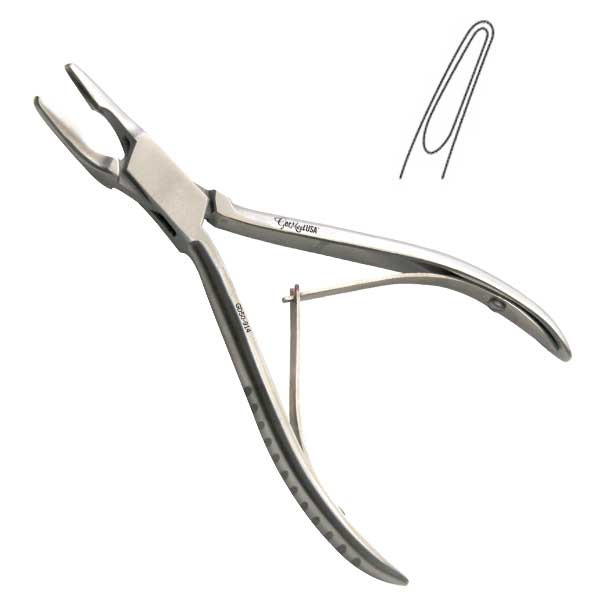
Types:
- End-Cutting Rongeurs: Trim bone from a straight angle, suitable for controlled, direct cuts.
- Side-Cutting Rongeurs: Designed to contour bone from the sides for improved access in hard-to-reach areas.
- Double-Action Rongeurs: Provide additional force, ideal for dense bone or thicker areas.
Key Features:
- Constructed with robust materials to withstand heavy use.
- Different cutting angles for various applications.
- Sharp edges that make bone trimming precise and fast.
Bone rongeurs offer the precision and strength needed to shape bone post-extraction, ensuring a smooth surface that promotes healing and prevents complications.
Try our durable bone rongeurs, built to handle tough tasks with ease and efficiency.
3. Hemostats – Key instruments of Oral Surgery
Hemostats clamp blood vessels and control bleeding, giving dentists a clearer view of the surgical site and improving procedural efficiency.
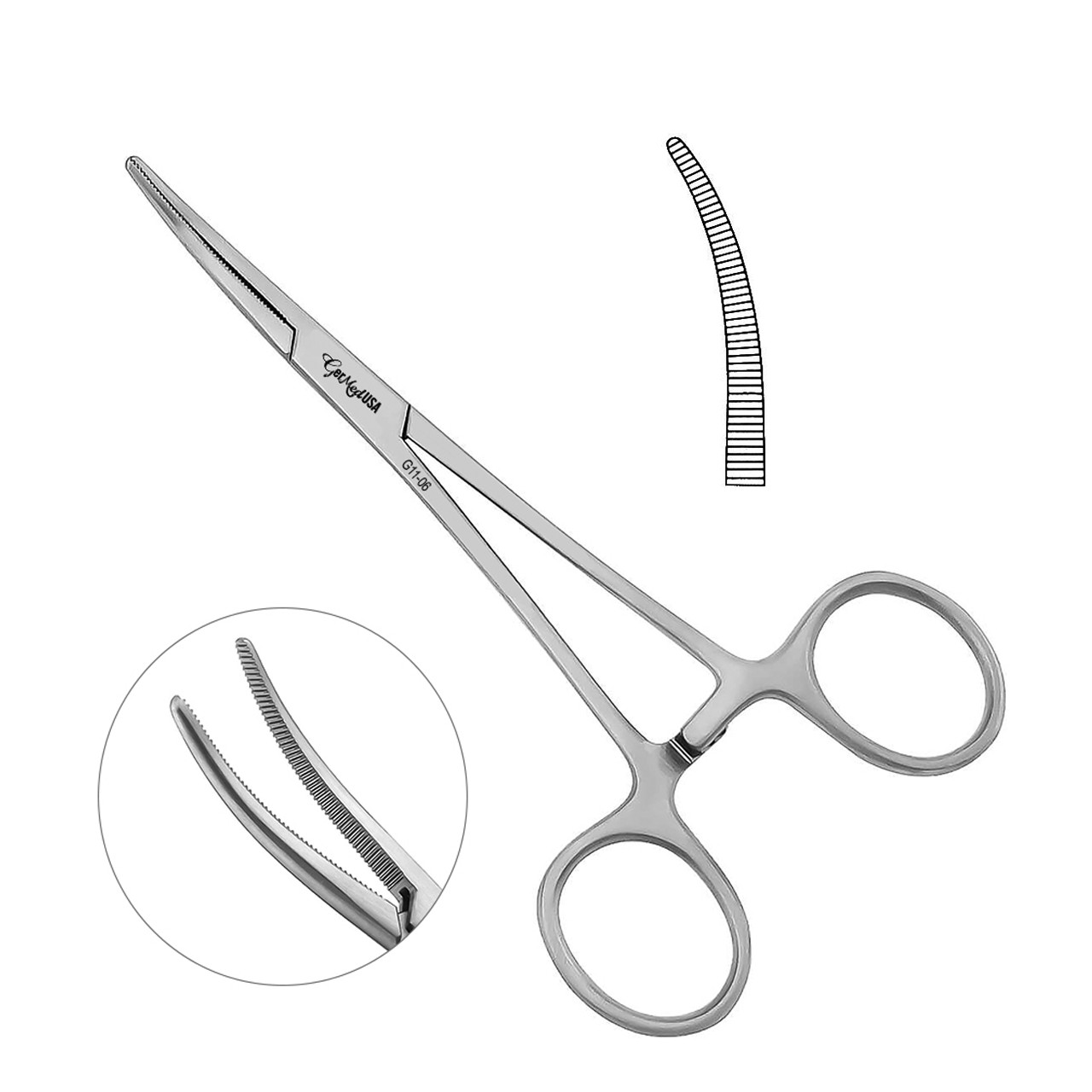
Types:
- Kelly Hemostats: Partially serrated jaws, ideal for larger vessels.
- Mosquito Hemostats: Small and fine-tipped for smaller blood vessels.
- Crile Hemostats: Full-serrated jaw, offering a stronger grip.
Key Features:
- Prevents blood flow during procedures for better visibility.
- Ensures a firm grip on blood vessels and tissues.
- Designed for quick and efficient sterilization.
Controlling bleeding is crucial to maintaining a clear field of view. Hemostats reduce the need for constant suction, making surgeries quicker and less invasive.
Discover our secure and reliable hemostats, perfect for precise blood control in any procedure.
4. Needle Holders
Needle holders secure suturing needles, providing stability and control during wound closure. These tools ensure the suture is applied with accuracy, reducing the risk of movement or slippage.
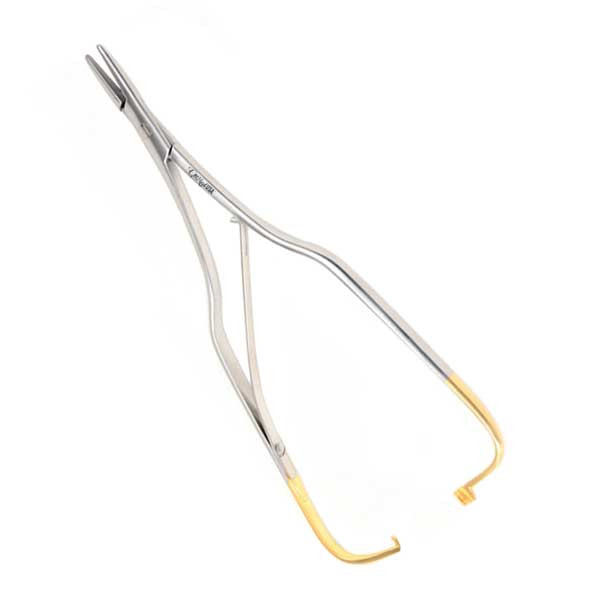
Types:
- Mayo-Hegar Needle Holder: Commonly used, providing versatility for different needle sizes.
- Mathieu Needle Holder: Spring handle design suited for precise, delicate suturing.
- Castroviejo Needle Holder: Ideal for fine suturing, particularly in microsurgeries.
Key Features:
- Secure Locking Mechanism
- Ergonomic Grip
- Anti-Slip Surface
A secure, ergonomic needle holder allows for precise suturing, which is vital in oral surgeries where delicate tissue handling is required.
Enhance your suturing precision with our anti-slip, comfortable needle holders.
5. Dental Forceps
Dental forceps are used for grasping and removing teeth during extractions. Their design provides a secure grip, ensuring smooth teeth removal with minimal trauma to the surrounding tissues.
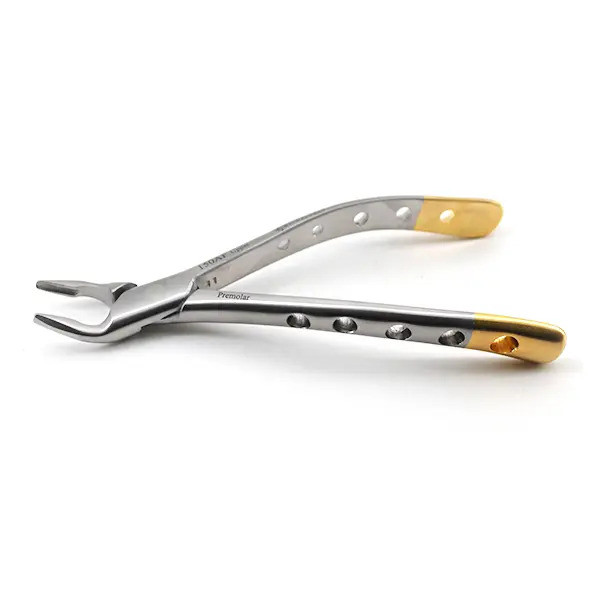
Types of dental instruments used in oral surgery:
- Universal Forceps: Suited for various types of teeth, offering versatility.
- Anterior Forceps: Specifically designed to remove front teeth with optimal fit.
- Molar Forceps: Designed with a wider grip for securely extracting larger molars.
Key Features:
- Strong Grip
- Variety of Designs
- Precision Tips
These instruments of oral surgery offer a reliable way to extract teeth without excessive force, making procedures smoother and less painful for patients.
Choose our specially-designed dental forceps, perfect for effective and gentle extractions.
6. Surgical Suction Tips
Surgical suction tips keep the surgical site dry by removing fluids, blood, and other debris. Clear visibility during surgery helps reduce errors and improves efficiency.
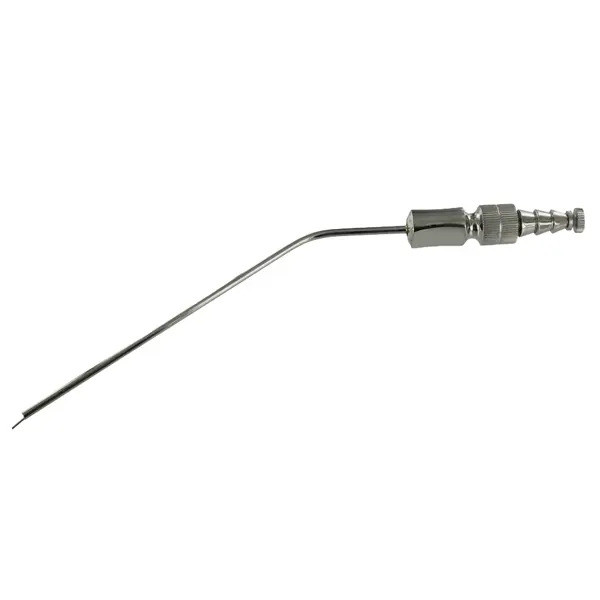
Types:
- Yankauer Suction Tips: Large opening for maximum suction in high-fluid environments.
- Frazier Suction Tips: Fine-tipped for precise control in limited space.
- Poole Suction Tips: Multi-hole design to reduce tissue trauma, ideal for sensitive areas.
Key Features:
- Efficient fluid removal
- Designed for quick cleaning and re-use, ensuring hygiene in the surgical setting.
- Made from robust materials that withstand the rigors of frequent use without degrading in quality.
Control of a dry field is extremely important in any oral surgery. Suction tips grip their surroundings and remove all liquids, thus increasing the dentist’s visibility and allowing them to concentrate on the operation rather than on blood and other materials that muddle the procedures. As there are different variations available, it is vital that one selects the right type of suction tip based on the surgery's requirements.
Enhance your surgical efficiency with our quality suction tips designed for optimal performance in every procedure. Explore our range now!
7. Retractors
Retractors are very important instruments of oral surgery as they help retract back soft tissues during surgical procedures, making it easier to reach and see the area of interest. They also help keep the region free and safe from trauma to the important tissue.
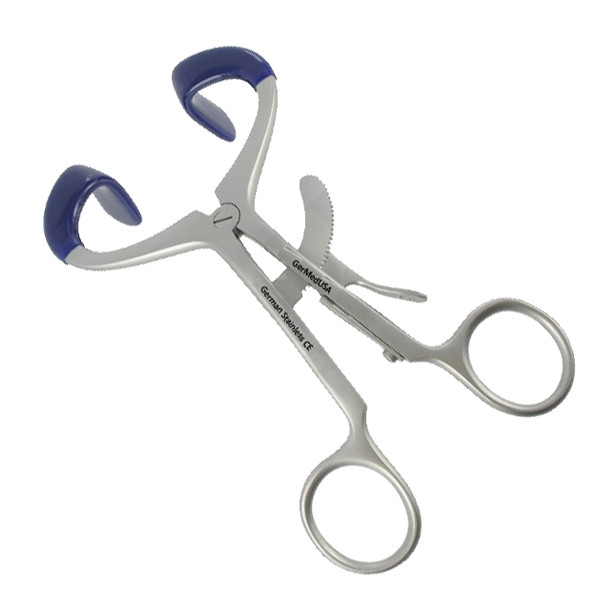
Types:
- Minnesota Retractor: These basic oral surgery instruments are widely used for retracting the cheek and tongue, providing excellent exposure to the oral cavity.
- Boucher Retractor: Specifically designed for retracting soft tissues in the oral cavity, making it easier to visualize and access the surgical area.
- Surgical Hooks: These single-point retractors are useful for targeted retraction in specific areas, particularly in complex cases.
Key Features:
- Offered in multiple dimensions in accordance with conventional requirements and internal structures of the patients.
- Engineered to cause the least amount of discomfort violation to the tissues that are adjacent to the region of interest, thereby offering quite a high level of comfort for the patients during the procedures performed on them.
Retractors are used in oral surgery. They help the dentist have a wide line of sight during the operation. These instruments of oral surgery not only enhance the effectiveness of the operation but also ensure safety, as surrounding tissues are safeguarded from infection by operating instruments.
Explore our extensive selection of quality retractors designed for your oral surgery needs.
8. Bone Files
Bone files are used to smooth and contour the edges of bone after extractions or osteotomies. They play a vital role in preparing bone surfaces for future procedures, such as implant placements.
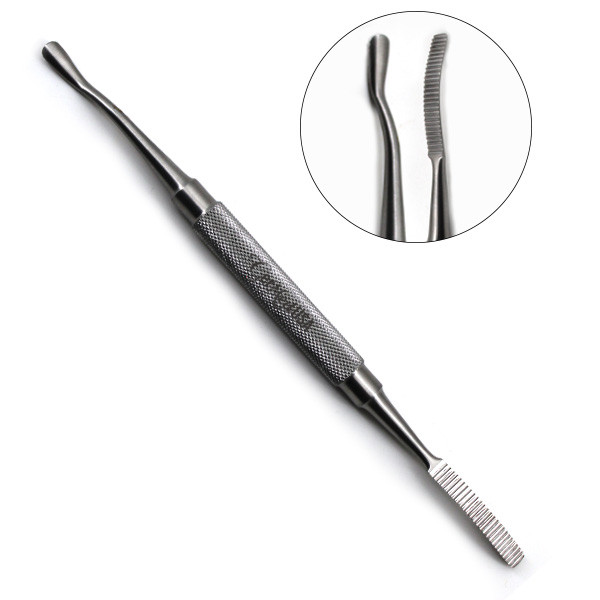
Types:
- Hand-held Bone Files: Simple, manual files that offer controlled smoothing of bone surfaces.
- Rotary Bone Files: Used in conjunction with a handpiece for quick and efficient contouring, ideal for larger areas.
- Curved Bone Files: Designed for specific angles to access difficult areas during surgery.
Key Features:
- Ensures smooth, safe surfaces post-surgery, reducing the risk of complications.
- Various textures are available for tailored applications, enabling more precise finishing work.
- Comfortable grip for prolonged use, reducing hand fatigue during extensive procedures.
Smoothing bone edges is crucial for preventing irritation and pain in the postoperative period. Bone files allow for precise finishing that enhances patient comfort and facilitates healing.
Invest in our premium bone files, designed for efficient and precise finishing work, ensuring optimal patient outcomes.
9. Dental Anglevator
The dental anglevator is a specially designed six-in-one instrument. It is an ideal option especially for severing periodontal ligaments to provide leverage and control for efficient and less traumatic tooth extractions.
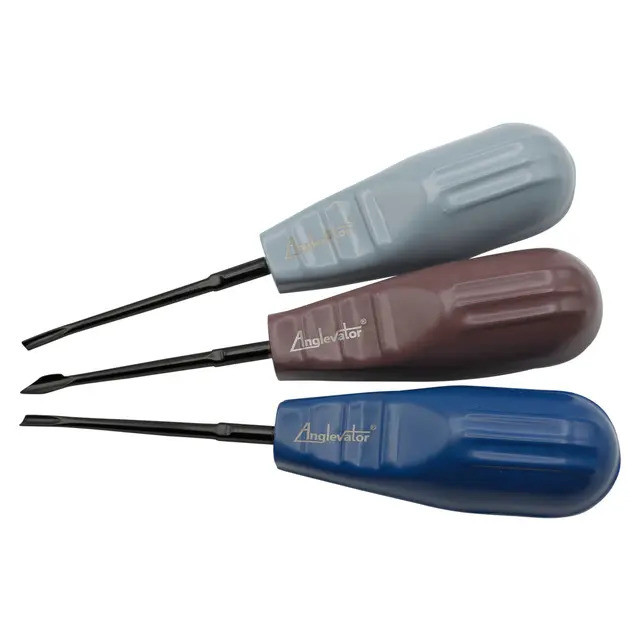
Key Features:
- Angled Blades
- Multipurpose Use
- Durable Construction
The unique design of anglevators allows for controlled extractions in challenging cases. They minimize the risk of breaking roots or damaging adjacent tissues, contributing to a smoother surgical experience and quicker patient recovery.
Upgrade your extraction toolkit with our robust dental anglevators, expertly crafted for complex extractions.
10. Surgical Scalpels
A surgical scalpel is commonly used to make cuts. Because of its clean cuts, it is capable of performing both soft and hard tissue surgeries, making it essential in any surgical operation.
Types:
- #10 Blade: Ideal for long, straight incisions in soft tissue.
- #11 Blade: Excellent for puncture incisions, commonly used in abscess drainage.
- #15 Blade: Small and maneuverable, perfect for detailed, controlled cuts.
Key Features:
- High-quality blades for sharp, clean incisions.
- Designed to minimize fatigue and increase control.
- Crafted from surgical-grade stainless steel for longevity.
With scalpels and other instruments of oral surgery, dentists can make precise incisions, which is especially important when delicate oral tissues need to be incised.
They are made so that they also cut, supporting the untraumatized area and ensuring no or little scarring after surgical operations.
Sum Up!
These instruments are foundational to achieve optimal patient outcomes. Investing in quality instruments of oral surgery is not just a choice; it’s a commitment to providing excellent patient care and enhancing the efficiency of your practice.
Are you ready to enhance your oral surgery practice?
Explore our wide range of premium dental surgical instruments designed for precision, durability, and enhanced performance.
With GerDentUSA instruments, you can ensure the best patient outcomes and foster confidence in your dental surgery skills.
Additionally, we offer an instrument customization option; if you require a tool that is not in our cart, we will manufacture it for you after knowing your requirements.
FAQs
What are the most essential instruments of oral surgery?
Every instrument is vital, but surgical scalpels, forceps, and dental anglevators are fundamental for multiple procedures.
How often should oral surgery instruments be replaced?
Quality and maintenance determine longevity. With proper care, high-quality instruments can last several years.
What should I consider when purchasing dental instruments?
Focus on quality, ergonomics, and how well the instruments meet the specific needs of your practice.

